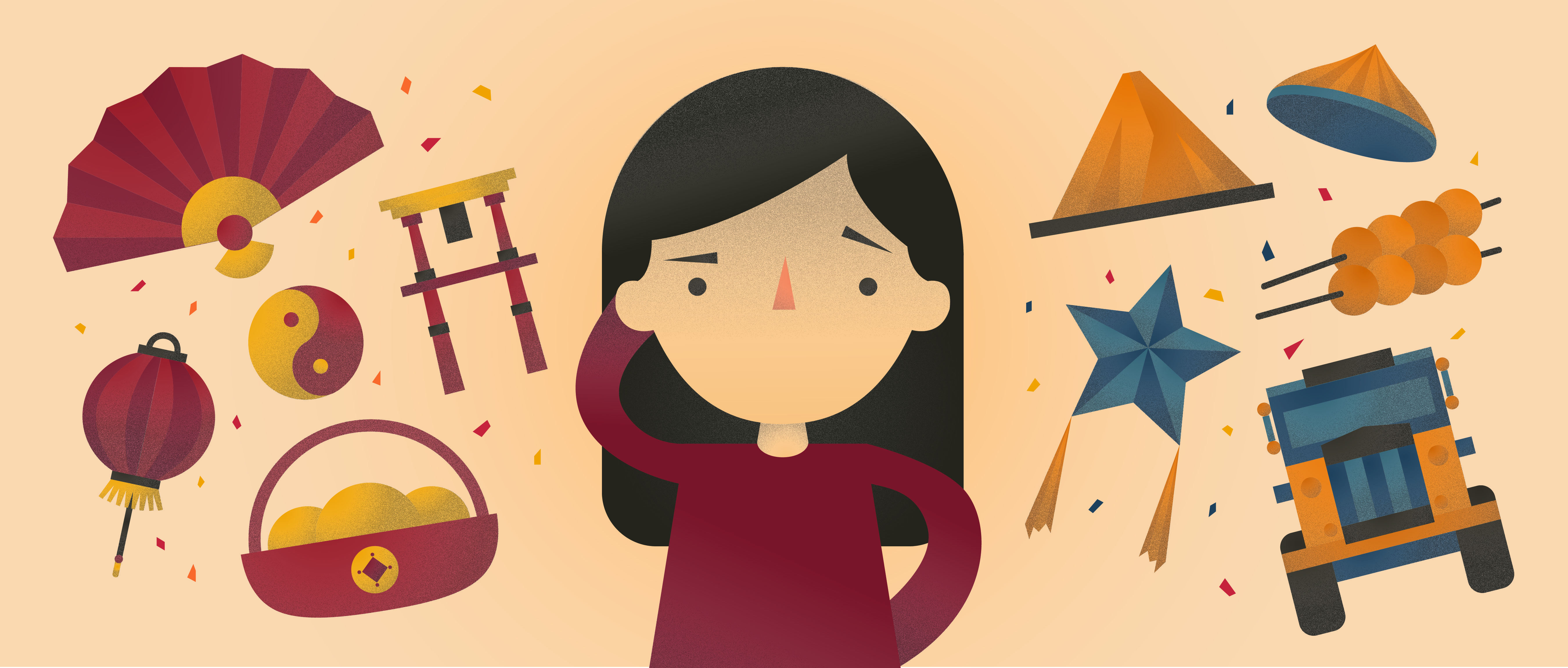In the Philippines, Chinese New Year is quite the deal. This special non-working day provides another excuse to set fireworks off and bug your Chinese friends for tikoy. Beyond the festivities and zodiac fanfare, however, lie questions about intercultural relations, particularly when tensions over the South China Sea loom large.
Raised in the Philippines yet Chinese by blood, Chinese-Filipinos form a significant community, numbering at 1.2 million out of 105 million Filipinos. They face widely held stereotypes about their livelihoods, loyalties, and lifestyles. It is against this backdrop that the Chinese-Filipino youth now build a unique, collective identity—something more than just a 50-50 combination of two cultures.
Caricatures cancelled
Though disputes with China start geopolitically, they make their way into the everyday Filipino’s consciousness—not just as news factoids, but as simmering suspicions for those quick to point fingers. It has not helped that influential local personalities have publicly stoked the flames. National Artist F. Sionil Jose, for one, wrote in 2015 and again last month about ethnic Chinese exploiting Filipinos and staying loyal to China in the event of war. Economist Solita “Winnie” Collas-Monsod has echoed his main sentiments, saying that “a Chinese-Filipino will never ever state unequivocally that he/she is a Filipino first, and a Chinese second.”
Jubilee Ong, director of the Ateneo Ricardo Leong Center for Chinese Studies (ARLCCS), thinks otherwise of her heritage. “The modern Chinese-Filipinos are at heart, Filipinos who treasure their Chinese ethnicity, culture, and values,” she clarifies. “As a Chinese-Filipino myself, I do not consider it as an identity crisis.”
Yet, for the youth just coming to terms with their background, stereotypes can form the bases of identity crises. Chinese in the Philippines are often deemed the faces of capitalism, what with their surnames figuring prominently in lists of top tycoons. The idea may not apply to all Chinese-Filipinos, but the connotation of greed seems to have stuck, as Ong observes.
“Two things I often hear describing Chinese-Filipinos: mayaman and magaling sa math (rich and good at math),” she says. “I will not say these are misconceptions, but rather the main reasons behind these stereotyped traits are often overlooked. Chinese-Filipinos are generally very hardworking given their history in the Philippines.”
Here, Ong alludes to the Chinese trading with Filipinos before colonizers even came, to their survival of segregation under the Spanish and American periods, as well as the boom of Binondo-based manufacturing businesses. To this, Ateneo Celadon—the university’s premier Chinese-Filipino organization—President Katreena Chang (4 BS ME) also recognizes the Chinese entrepreneurial spirit.
“[Business is] a way to make a living. It just so happens that a fair percentage of the youth [remains] business-oriented,” she explains. Of Sionil Jose and Monsod’s doubts—that Chinese-Filipinos only pay heed to China—Chang speaks differently on behalf of the youth.
“Perhaps another thing is [that] Chinese-Filipino youth supposedly don’t care about Philippine politics and are supportive of China’s efforts,” she continues. “But let’s face it, that’s a personal view thing, and it’s about believing in what seems right rather than just backing a country.”
A tale of two cultures
Aside from a variety of stereotypes, like being business-minded or politically loyal to the People’s Republic of China (PRC), there remains the belief that Chinese-Filipinos—apparently not Chinese enough and not Filipino enough for this society—are exclusive and keep to themselves. This creates a troublesome notion of racial discrimination, of apparently seeing non-Chinese people as less, leading to the infamous moniker: The Great Wall.
“A lot of people assume that all Chinese-Filipinos would only date, especially marry, fellow Chi-Fils,” Chang says, explaining the term, “but while true for some, it’s definitely not for all, and for a fair amount of instances, it’s done mostly out of respect for the wishes of elders in the family.”
Chang adds that while Chinese-Filipinos are admittedly more inclined to spend time with other Chinese-Filipinos, it is not out of the so-called exclusivity of the Great Wall, but rather their similarities.
“As Chinese-Filipinos, we have a tendency to gravitate towards each other mostly because of shared experiences, but that’s definitely not to see that we stick only to ourselves,” she says.
But by being neither wholly Chinese nor wholly Filipino, Chinese-Filipinos are more likely to experience some sort of identity crisis. Amidst flourishing stereotypes and the blend of the two cultures, Chinese-Filipinos—particularly the youth—find trouble in deciding just where, exactly, he or she belongs.
The apparent loss of Chinese culture as Chinese-Filipino society evolves illustrates this idea. While the ARLCCS and Ateneo Celadon contribute several activities to keep the culture alive, some still fear losing touch with their roots.
“Admittedly, many young Chinese-Filipinos now speak more fluent English and Filipino than Hokkien or Mandarin,” Ong says, noting the difference between Chinese-Filipinos now and then.
However, Ong is also adamant in maintaining that this does not take away from Chinese-Filipinos continuing to take pride in both their Chinese and Filipino identities. “At heart, they are still very much Chinese as much as they are Filipinos,” she says.
Chang echoes these sentiments, emphasizing the uniqueness of Chinese-Filipino culture, and how there should be nothing wrong with a combination of the two. “There’s always that struggle to decide whether to assimilate as Filipino or to stand or assert having that Chinese side. In my view, there really shouldn’t be a distinction in the first place—so that’s where the crisis lies,” she says.
Chang also believes that Chinese-Filipinos should embrace the two identities as a whole instead of trying too hard to be one or the other. “Chinese-Filipinos are uniquely Chinese-Filipino, which does not mean they have to choose a ‘side,’ should divisive issues come up. Each person has his or her own mind and values, and need not be boxed into any faction or stereotype,” she finishes.
Redefining identity
More than governments and Great Walls, more than mooncakes every Mid-Autumn Festival and tikoy every New Year, there is no denying that Chinese-Filipino culture creates a distinctive identity that transcends convention. However, this isn’t to say that its uniqueness relegates it to a cut above the rest, nor below other types of diaspora. It is simply what it is, special in its own ways, just like how other cultures have their own certain idée fixes. Therefore, just like other cultures, it deserves, more than anything, to be taken pride in.
Rather than have society be dismissive and stereotypical of a certain culture, each Chinese-Filipino must embrace what is uniquely theirs. After all, if national identity goes beyond blood or ethnicity, then cultural identity does so, too.
Illustration by Kathleen U. Yap






